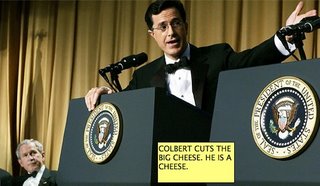 BACK TO SCIENCE AND STARLINGS WHO SPEAK
BACK TO SCIENCE AND STARLINGS WHO SPEAKWhat's interesting to me is that scientists are able to come up with ingenious experiments to test their hypotheses. That's so important—how a test is designed and made as foolproof from error as possible. An experiment's validity is a key point in so much scientific debate, isn't it? In fact, that may be one of the key differences between those whose brains are superstitiously religious and those who think more rationally. I'm still waiting for religionists to come up with a test that will reveal the face of god.
[OPEN QUOTE]
Starlings' Listening Skills May Shed Light on Language Evolution
By CARL ZIMMER May 2, 2006
The warbles and rattles of a starling seem innocuous enough. But starlings are now the object of a fierce debate about the nature of language.
In the current issue of Nature, scientists report that starlings recognize song patterns based on rules of the sort that make language possible. Their paper has drawn sharp reactions pro and con from linguists and animal communication experts.
The debate is over what, if anything, the results mean for human language. Some scientists believe that the findings offer new clues to how it evolved. Others dismiss the notion.
Human language is unique in the world of animal communication. Humans can convey an infinite range of ideas with a limited vocabulary, because they are not limited to strings of disconnected sounds. Humans can generate meaning by combining words in various ways, building them into clauses and inserting those clauses into sentences....
Dr. Fitch and Dr. Hauser concluded that there was a ceiling on the ability of tamarins to recognize patterns in sounds. But they hesitated to draw broad conclusions, calling instead for tests on other animals....
Enter the starlings.
The songs of male starlings are made up of warbles, rattles, whistles and other sounds, collectively known as motifs. "They learn new motifs and embed them in their songs," said Timothy Gentner, a neurophysiologist at the University of California, San Diego. Starlings can also recognize other individuals by learning the unique motifs used by each bird.
These skills, Dr. Gentner decided, made starlings a perfect choice for an experiment. He teamed up with three psychologists from the University of Chicago to see which patterns the birds could recognize.
"We said, 'Well, if there's any species that's capable of doing this, it's starlings,' " Dr. Gentner said.
Dr. Gentner and his colleagues built an artificial language from warbles and rattles. They constructed some songs according to the simple ABAB rule and others according to the complex AABB rule.
The starlings trained by listening to songs. They had to peck at a hole if a song had the right pattern, and do nothing if it did not. If they chose correctly, the birds got food; if they chose wrong, the lights went out briefly.
It took as many as 40,000 trials, but 9 of 11 starlings learned to recognize the complex AABB pattern over 90 percent of the time. They could even recognize it when three pairs of warbles and rattles were inserted between an original pair of warbles and rattles.
"They can do this, and they do it with a high degree of proficiency," Dr. Gentner said.
He is confident that he can rule out the possibility that they are using a very simple strategy, like paying attention to whether a warble was followed by another warble. If that were true, the birds would react the same way to an AABB pattern and to AAABB, which violates the rule.
"I was surprised by how well they did when we threw really hard challenges at them," Dr. Gentner said.
Some linguists strongly disagree....
[CLOSE QUOTE]
PS: The man in the picture is the man who leveled the Bush record in Bush's face at the National Press Club dinner. As you can see, our Presidential impersonator George Bush was not amused. You can get his show on Comedy Central. Picture from the NY Times Internet site.
No comments:
Post a Comment